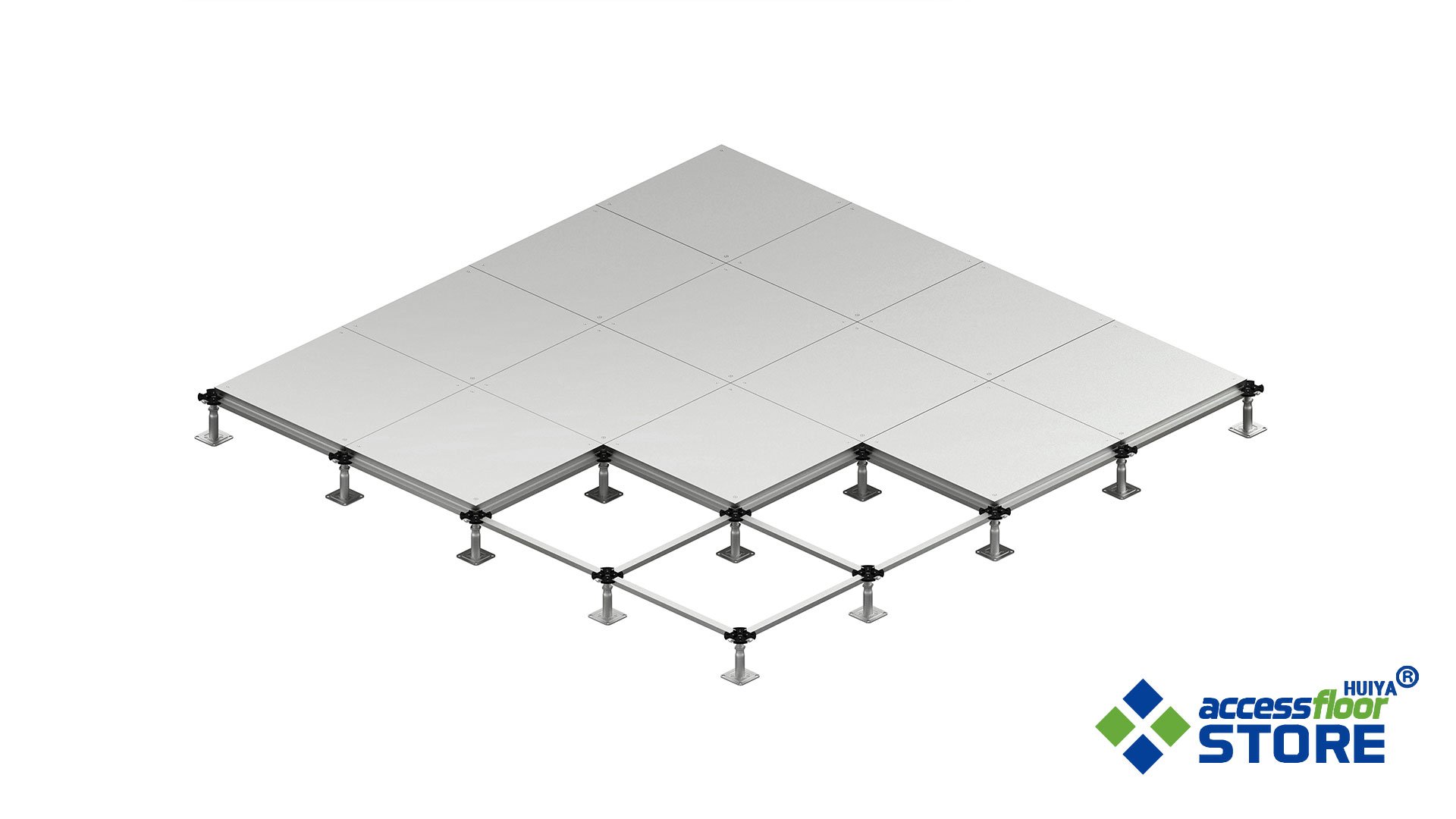Raised Floor Systems - Huiya Decoration Materials Co., Ltd (AccessFloorStore)
Raised floor systems, also known as access floors, are raised structural floors that are stabilized on a solid foundation, usually a concrete slab. The raised floor system creates a gap ideal for routing electrical wiring and HVAC ducts.The structural floor consists of panels on the grate supported on adjustable vertical plinths. The plinths are attached to the ground with mechanical fasteners or glues. Because the plinths are adjustable, the gap between the raised floor and the ground can be from 3 to 48 inches.
Panels are usually 2 feet by 2 feet and usually consist of a cement or wooden core covered with steel or aluminum. The panels are compatible with many floor finishes, such as vinyl, linoleum, laminate, rubber, carpet and stone or ceramic tiles.The implementation of value engineering and life cycle cost analysis will help find a balance between aesthetics, costs, durability and maintenance, as well as the purpose of a raised floor to determine which finishing materials are the most beneficial options for the project.
The benefits of a raised floor
The most common use of access floors is to lay cables, electrical wires and HVAC ducts. Routing electric cables and wires through the available space between the panels and the ground allows easy access and flexibility; the cabling can be redirected, repaired and modernized without any construction and minimal interference in the company's daily operations. In conjunction with modular electrical systems and modular walls, the entire building can be changed in a fraction of the time it would traditionally take.Heating and cooling a building with a raised floor system is also more efficient. The empty space between the panels and the ground acts as an expansion chamber to evenly distribute the conditioned air throughout the building. In addition, because the warm air rises, heating the building from the access floor gap in the winter is more effective and efficient.Raised floors are particularly useful in data centers and telecommunications facilities. Computer systems can rest on perforated raised floor panles so that air-conditioned air is available for each device. The equipment can then be designed to extract cool air from below.Due to increased performance and accessibility, access floors are an ideal alternative to suspended ceilings, prefabricated moldings and dado moldings.
Questions to ask when planning a raised floor systemThere are several things to consider when planning a raised floor system in a building project. These comments will help ensure a smooth, safe and timely installation, along with confirmation of the necessary structural integrity based on the intended use.What conditions must the substrate meet? for example, sealed, wet or dry contamination, structural integrity, level of tamped finish, levels of humidity and alkalinityWhat are the local conditions required for grounding the access floor?
- How will the raised floor interact with the door sills?
- What safety guidelines are required for floors? for example, fire protection systems
- What are the load capacity requirements? for example stationary loads, rolling loads, pedestrian traffic
A raised floor system can be a beneficial element in any building. The flexibility and performance provided is ideal for many potential users. In addition, residents do not have to feel limited by some aesthetic designs, since there are many options for finishing the floors. Analyzing and answering a few comments along with asking any questions or doubts to your floor contractor will facilitate your work and simplify the planning process.If you have questions about raised floor systems or an upcoming commercial floor design, please contact us here or call one of our locations nationwide. Also, download our value engineering guide and learn how to save money on your next commercial project.
